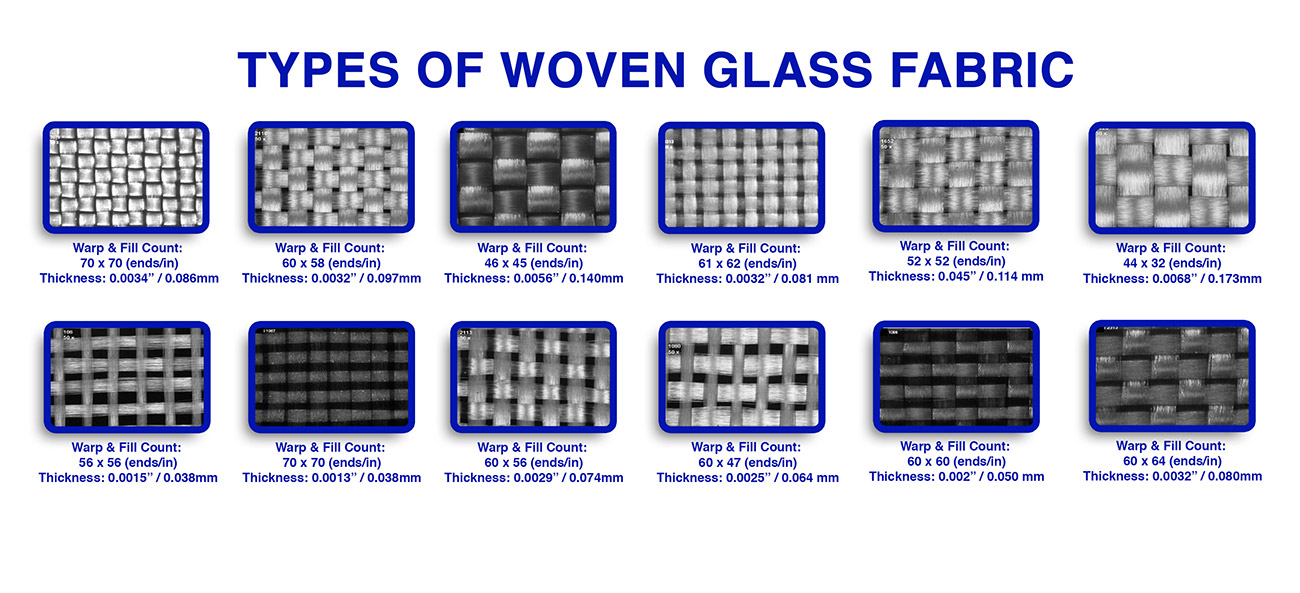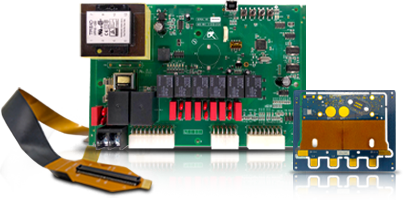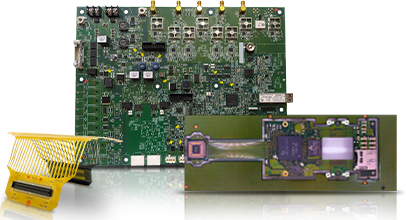Request our manufacturing capability
Capabilities
RIGID PCB Substrates
What Is PCB Substrate?
The material made up of epoxy resin fiber glass, used to laminate & work as a heat and current insulator is called as PCB Substrate. In category of Rigid PCB’s there are multiple substrates use for different industries and technologies. Below mentioned our capabilities shows the various Rigid PCB Substrates from which we can fulfill standard and complicated design requirements.
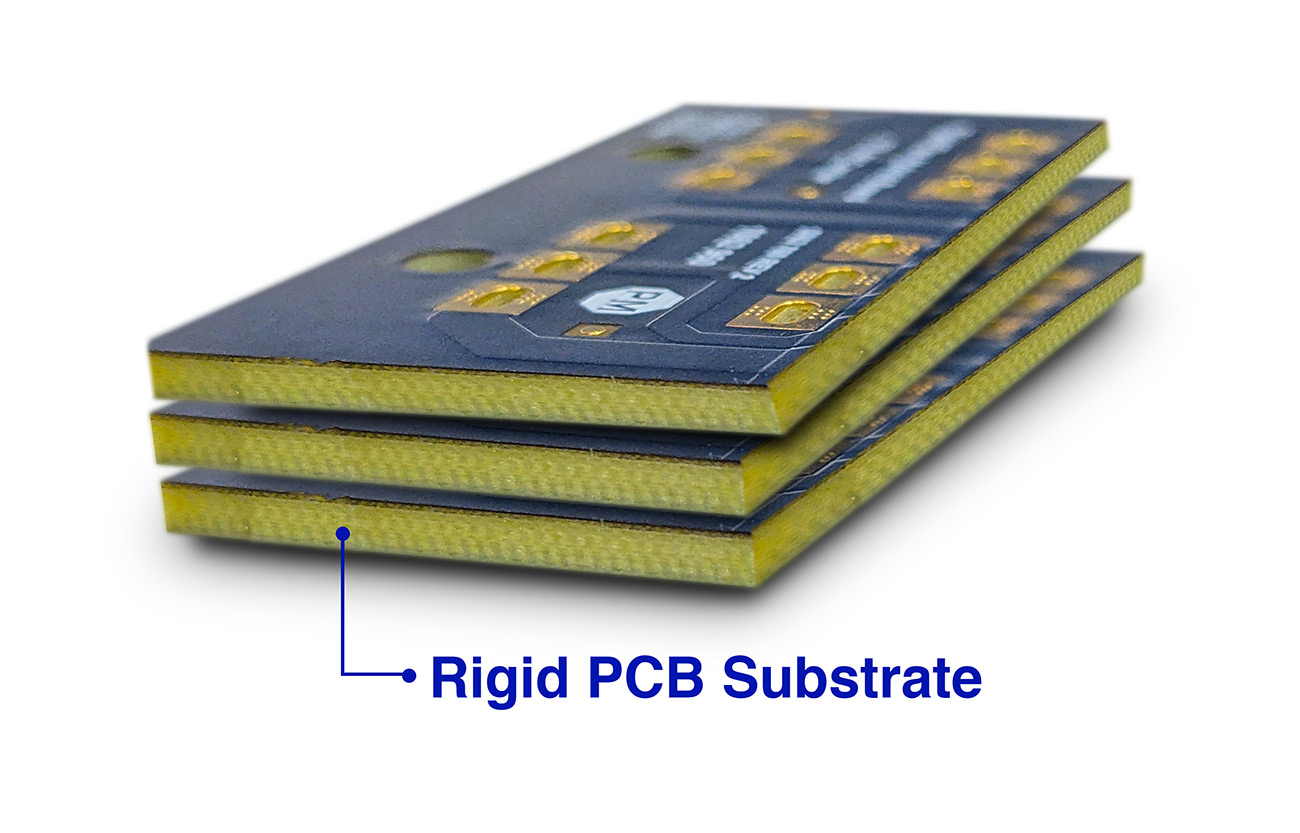
PCB Material/Substrate
| DESCRIPTION | STANDARD | ADVANCED |
|---|---|---|
| Regular TG | FR4 140TG | |
| High TG | NANYA NP175, ITEQ IT180TC, IT180A | |
| High Speed | ISOLA 370HR, FR408HR, I-Speed, PANASONIC M6, M7, ARLON 85N (PI) | |
| RF & Microwaves | ROGERS 4350B, 4003C, 4450F , ROGERS 4835 | |
| Aluminum Substrate |
VENTEC 4A2H – 2.2W/mK, MOT 105℃ ARLON 92ML – 2.0W/mK, MOT 90℃ |
|
| Halogen Free | NANYA NPG series (151, 170D, 186) | |
| BOARD THICKNESS | ||
|---|---|---|
| DESCRIPTION | STANDARD | ADVANCED |
| Single / Double Sided | Minimum (7.874 Mils) & Max (314.96 Mils) | |
| Multilayer | Minimum (11.81 Mils) & Max (314.96 Mils) | |
| Bow & Twist | 3 to 7/1000 | |
| BOARD DIMENSIONS | ||
|---|---|---|
| DESCRIPTION | STANDARD | ADVANCED |
| Max. Finish Board Size | 19″ x 24″ | 20″ x 27″ |
| min. Finish Board Size | 0.2″ x 0.2″ | 0.15″ x 0.15″ |
| Max. Board Thickness | 0.260″(+/-10%) | 0.280″(+/-8%) |
Glass Transition temperature (TG):
A crucial characteristic of materials used in printed circuit boards (PCBs) is the glass transition temperature (TG). It denotes the range of temperatures at which a PCB substrate changes from a glassy, stiff condition to a pliable, softened state. This transition is brought about by the material’s polymer chains becoming more mobile when heated. Crucially, the material’s characteristics revert to their initial states upon cooling down. Tg contributes to the stability and dependability of the PCB by ensuring that the board can soften but not burn at a specific temperature.
Decomposition Temperature (Td):
One important factor for materials, especially those used in printed circuit boards (PCBs), is the decomposition temperature (Td). It stands for the temperature at which a substance starts to deteriorate or undergo a chemical process. After this point, the material can start to emit gasses, lose its mechanical strength, or alter in ways that are not acceptable.
Td is important in the context of PCBs since it aids in determining the board’s maximum working temperature. A PCB’s performance and dependability may be impacted if its operation temperature rises above its Td because the material may deteriorate. Because of this, PCB designers carefully consider the intended use and environmental factors when selecting materials with the right Td values.
The Coefficient of Thermal Expansion (CTE):
The amount that a PCB material expands or contracts in response to temperature variations is measured by its coefficient of thermal expansion or CTE. Usually, it is expressed in ppm/°C, or parts per million per degree Celsius. A material’s volume expands with heat, and the CTE shows this behaviour. The following are some common CTE values for different PCB materials:
Laminates for FR4:
Direction of X: about 15 ppm/°C
Y direction: about 15 ppm/°C
70 ppm/°C in the Z-direction
Laminates made of PTFE (changes):
Average X-direction: around 16 ppm/°C
Average Y-direction: around 16 ppm/°C
Z-direction: an average of about 16 ppm/°C
Cu: 16–17 ppm/°C
LPI Soldermask: approximately 50 ppm/°C (subject to curing conditions)
Composition:
A rigid PCB is made up of multiple layers:
Solid Substrate: The rigidity and strength are provided by the foundation material. Polyimide and FR-4, an epoxy laminate reinforced with glass, are examples of common materials.
Copper Layers:
These layers of conductivity transmit electrical signals.
Solder Mask: is a barrier of protection that prevents solder from adhering to undesirable places.
Silkscreen Layer: A thin ink coating used for identifying purposes (part numbers, component placements, etc.).
Design Considerations:
Base Material: Because of its superior mechanical strength, dimensional stability, and heat resistance, FR-4 is frequently utilized.
Thickness of Copper: Although thicker copper layers can be more costly, they provide superior heat dissipation and conductivity.
Surface Finish: Based on ease of soldering and long-term dependability, select from alternatives such as HASL, ENIG, OSP, or immersion tin.
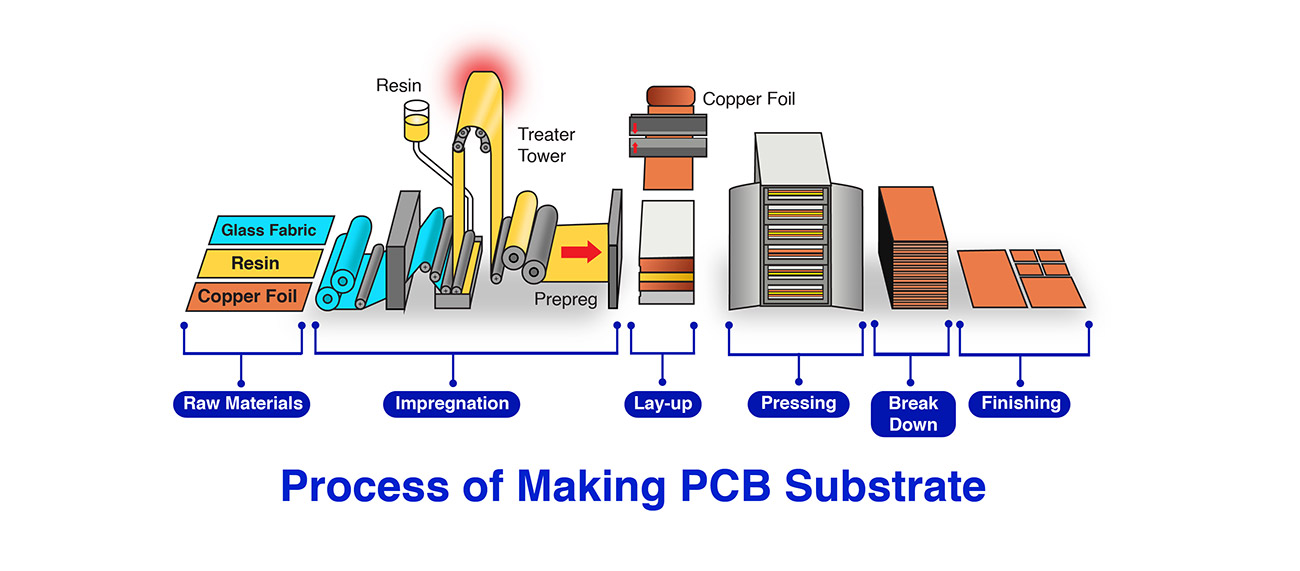
Applications of rigid pcb substrates
- Telecommunications
- Automotive
- Consumer Electronics
- Medical Devices
- Industrial Automation
- Aerospace and Defense
- Computing and Data Centers
- High Frequency RF, High Speed communication systems
